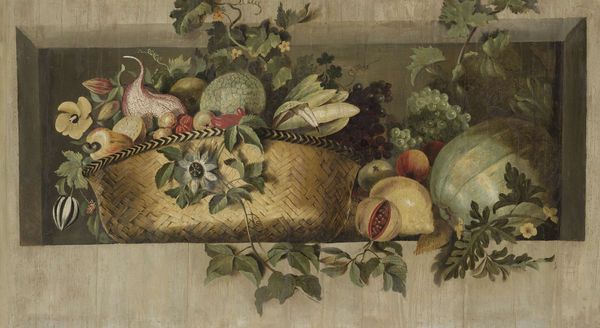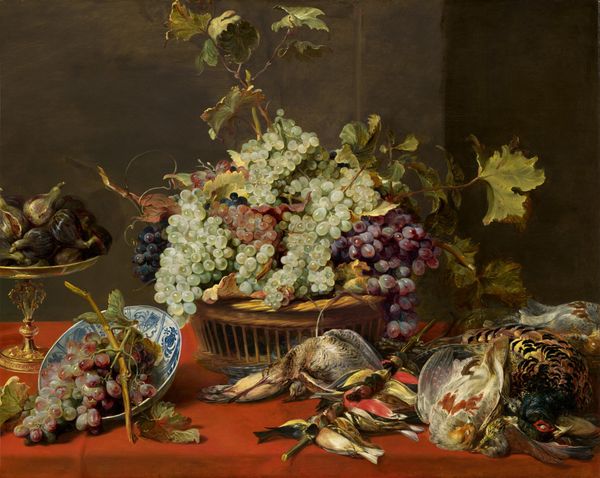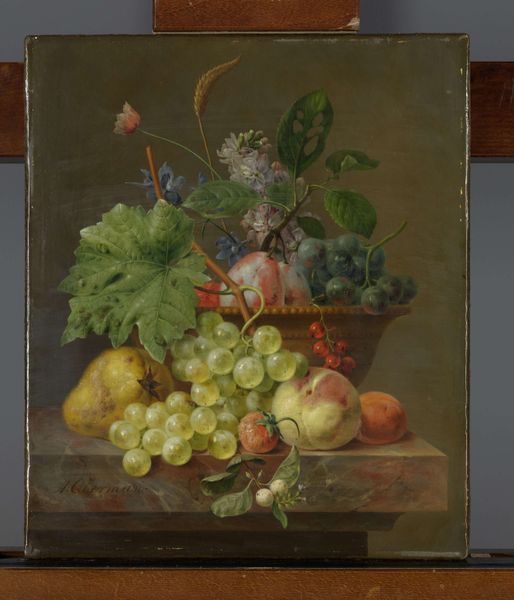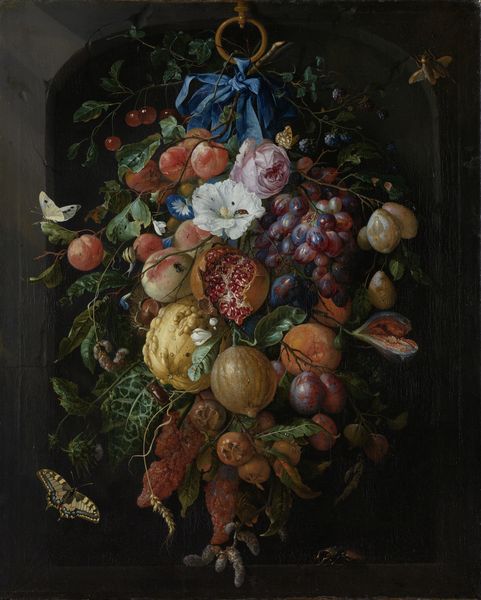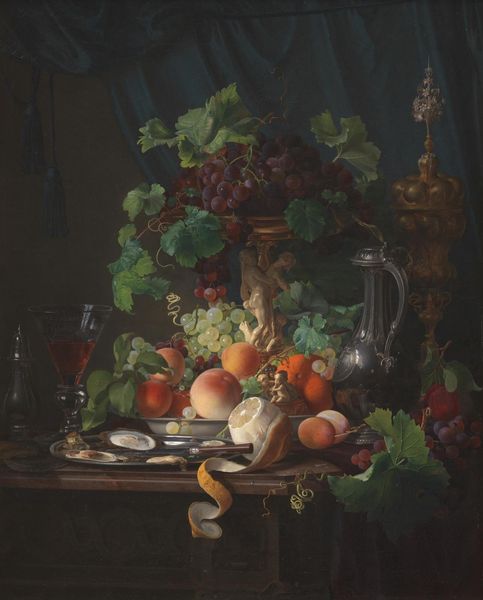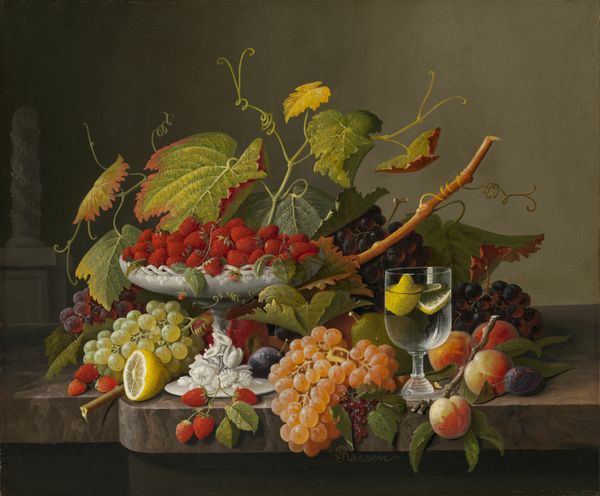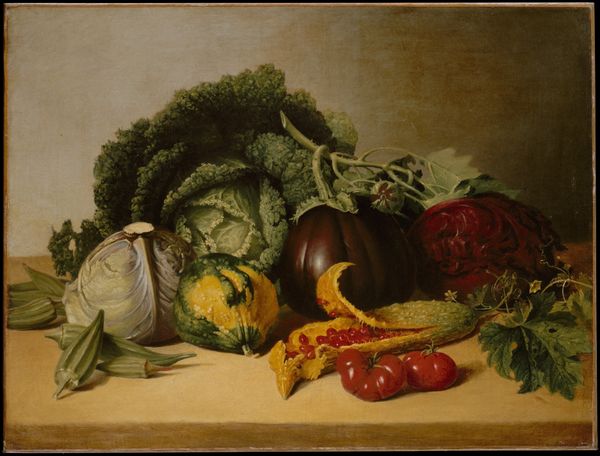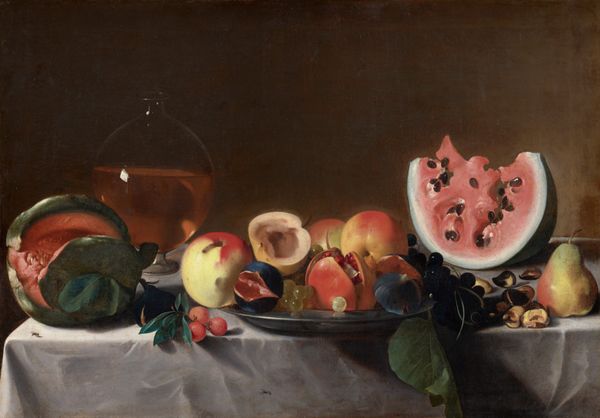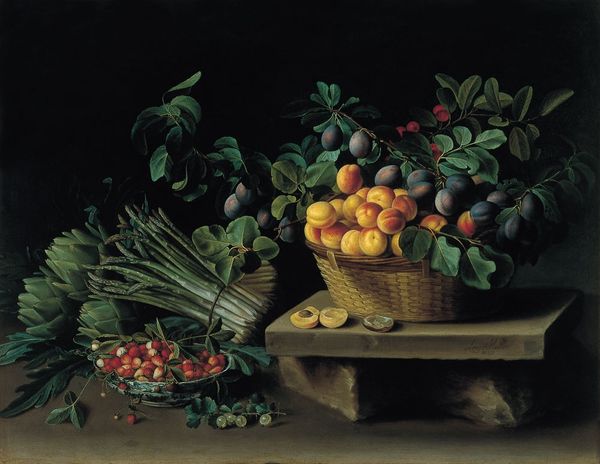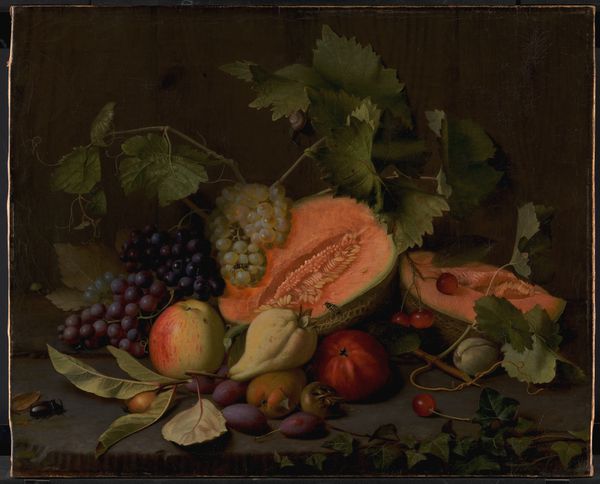
#
toned paper
#
possibly oil pastel
#
oil painting
#
acrylic on canvas
#
fruit
#
earthy tone
#
underpainting
#
painting painterly
#
watercolour illustration
#
watercolor
#
warm toned green
Dimensions: height 97 cm, width 172.1 cm, height 103.2 cm, width 178.5 cm
Copyright: Rijks Museum: Open Domain
Curator: Before us is "Still Life with Fruit and Flower Garlands," likely rendered between 1645 and 1650, and currently held in the Rijksmuseum. Editor: My first thought is subdued elegance; it's refined but almost ghostly with its pale earthy tones. The muted colours create a somber but calming mood. Curator: It's attributed to Jacob van Campen. The painterly texture suggests an oil painting possibly on toned paper. Look at the various planes and how the fruit is set within an illusionistic framed space. The labour invested must have been considerable! Editor: Absolutely, but it is fascinating to view it with an awareness of the prevalent socio-political circumstances of its genesis, not to diminish its formal qualities, of course. Does the fruit reflect a commentary on trade routes, privilege, or class distinctions inherent at the time? Curator: Such pieces served a decorative purpose in opulent residences, a testament to the flourishing merchant class, one may argue. Considering production, what dyes were sourced, and how the pigments ground and mixed—these materials, as commodities themselves, connect directly to systems of trade, skill, and economy of the time. Editor: Indeed. Further, the floral and fruit motifs invite considerations about notions of beauty in the 17th century, or societal constructions around women at that time. For instance, do the garlands and ripe fruit symbolise fertility and abundance within patriarchal structures? Curator: And observe how the textures are rendered. One notes brushwork indicating the labour, each dab and stroke contributes to constructing our aesthetic experiences. These were skilled tradespeople serving a booming market for decoration. Editor: Contextualizing in terms of cultural power adds an extra layer. Who consumed such artwork and what role did it perform in supporting contemporary standards about riches or virtue. Can it be related to gender roles or Dutch imperialism? Curator: Exactly! This piece epitomizes how economic expansion manifested into intricate designs. We begin to unravel that intricate dance by investigating how things came into being through the means and relationships of their production. Editor: Looking at it this way enhances awareness of material privilege and the cultural ideologies it inadvertently supported, pushing forward critical discourses beyond superficial allure. Curator: Indeed. I’ll never look at it the same way after today. Editor: Me neither. It’s so valuable considering art this way, going further to consider labour and political landscape alongside the appearance and elegance.
Comments
No comments
Be the first to comment and join the conversation on the ultimate creative platform.

